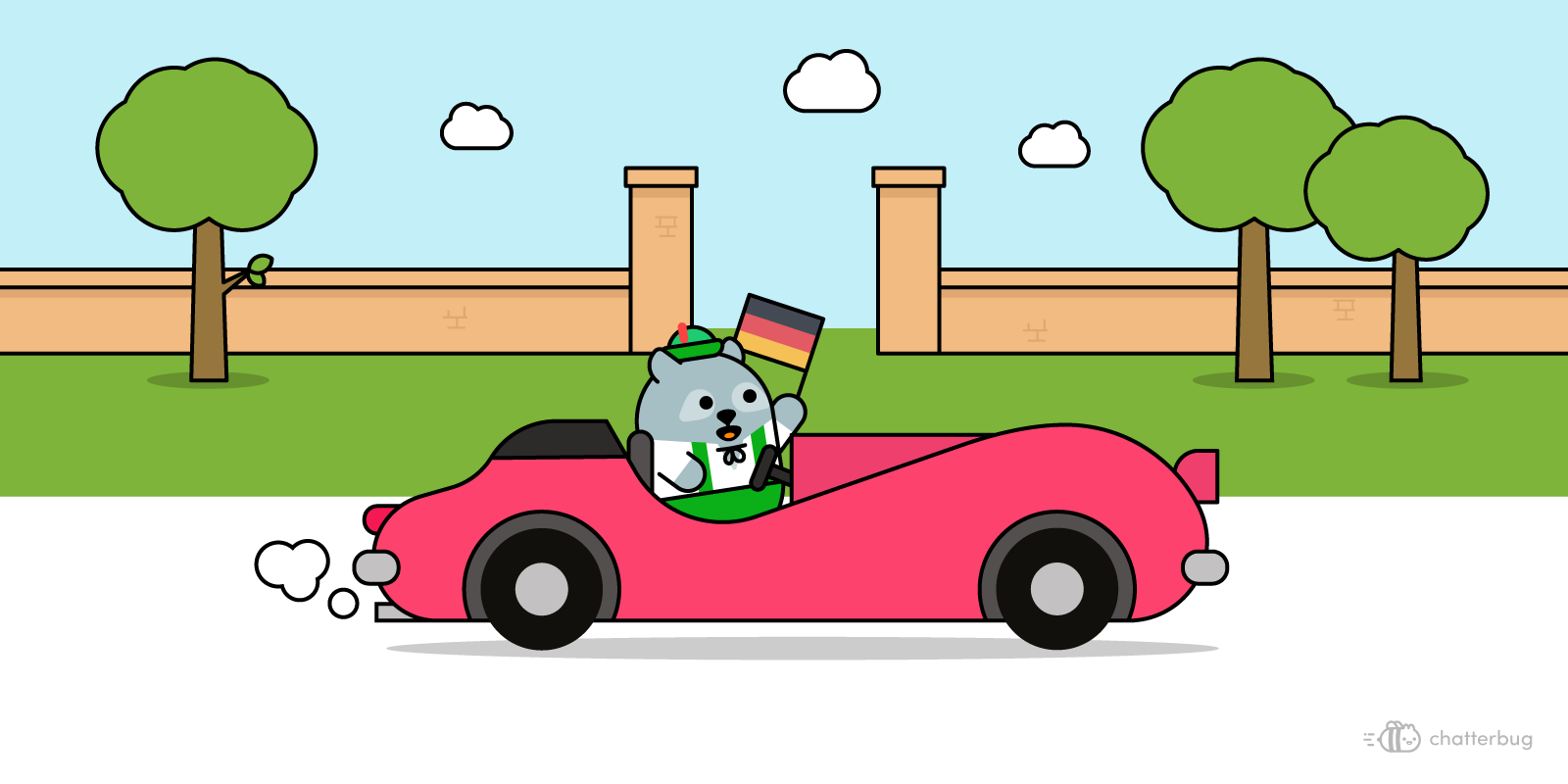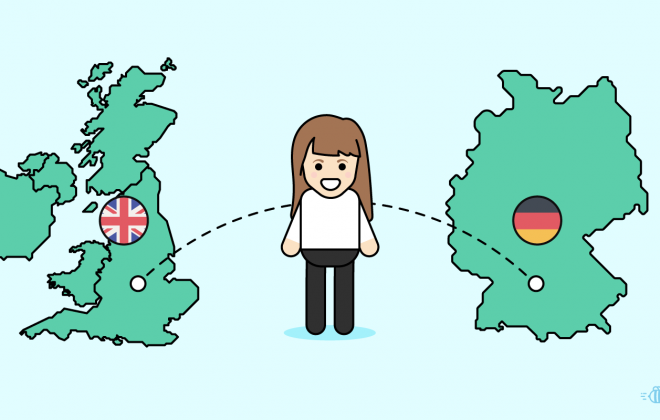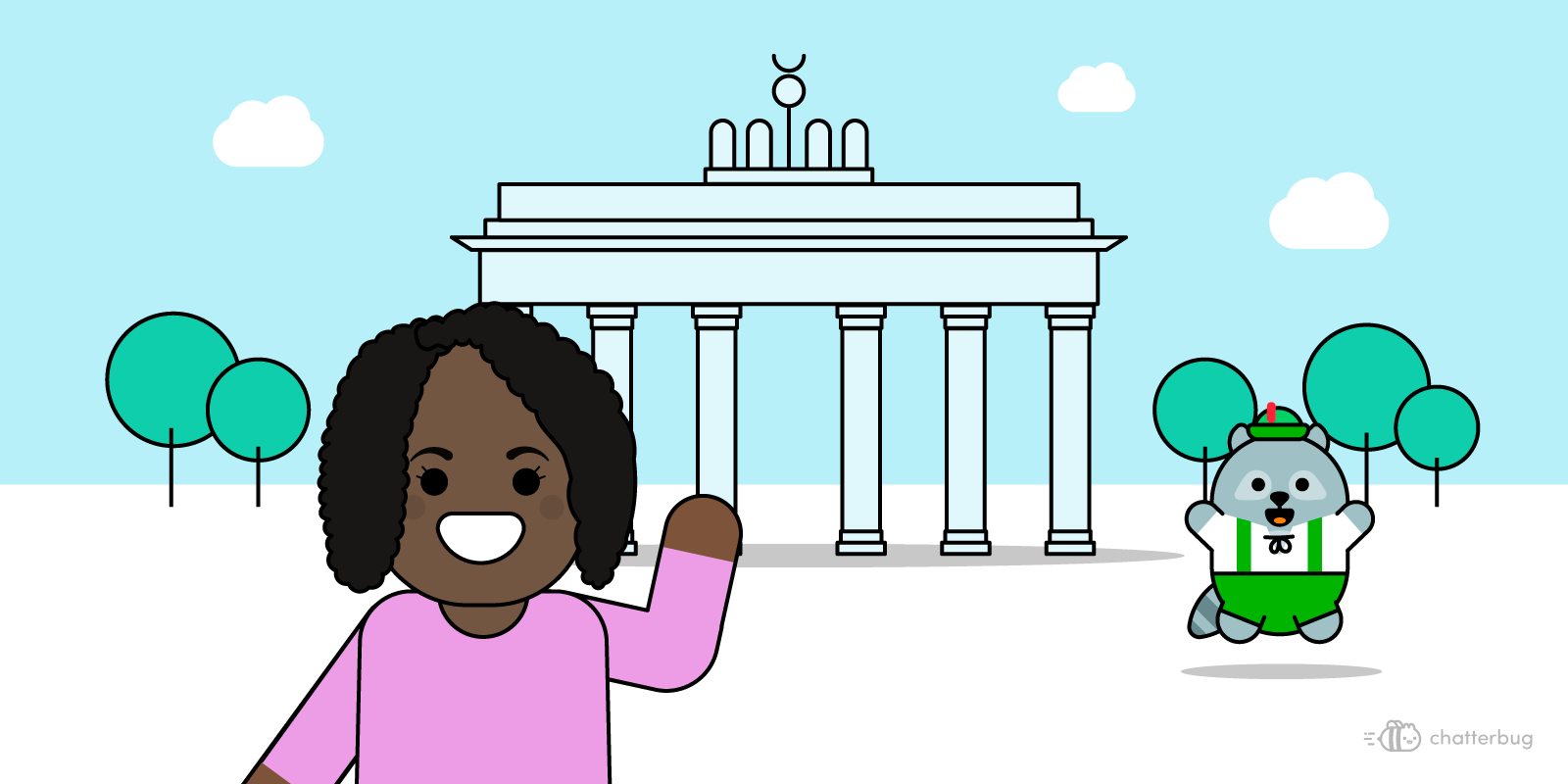8 Things to Know When Driving in Germany
You might be living in Germany and sometimes need to drive, or maybe you have some friends/family coming to visit you by car… well, make sure you read this little sum-up we made for you so you can be sure that alles ist in Ordnung before hitting the road! Because not knowing or forgetting one of these things can ruin the fun…
Be ready for snow and ice

Now, if you live in Germany and have a car, or if you are planning a visit during winter in the country, make sure your car is equipped with 4 winter tyres (even if you have a foreign registration plate!). They are the one with the pine tree symbol. The 4 season tyres, with the symbol M+S for Mud&Snow or Matsch&Schnee, are also ok (this rule only applies until the 30th September 2024). Changing/acquiring tyres can be done in any garage. Some can even store your summer tyres for you.
By law there is no time period where the tyres are supposed to be changed. The law only mentions weather conditions: snow, ice, frost, etc. But when the temperatures drop below 7°, it’s probably time to switch to winter mode because you never know what the weather will be like. Germans have a folk saying, a Bauernregel, to remember when to use winter tyres: Von O bis O – von Oktober bis Ostern (from October to Easter).
If you don’t do it and are caught by the Polizei, be ready to pay a fine between 60 and 120 €. On top of that it could lead to serious troubles in the unfortunate case of an accident…the insurance might not cover the damages!
Talking about cold weather, the drivers also have to make sure to put some anti-frost liquid in the windshield washer!
Helpful sentences:
– Hello, I need winter tyres for my car, please. → Hallo, ich brauche Winterreifen für mein Auto.
– Hello, could you please change my tyres? → Hallo, könnten Sie bitte meine Reifen wechseln?
– Could you also store my summer tyres, please? → Könnten Sie bitte auch meine Sommerreifen einlagern?
No green sticker, no city

Since 2008 a number of German cities (around 80 of them) have established the Umweltzone policy: a designated low-emission zone policy in order to improve the air quality in the city center. Only the vehicles that meet certain emission standards are allowed, the other ones must stay outside those areas. Coloured windscreen stickers – Feinstaubplakette – have been introduced in order to differentiate the vehicles according to their pollutants emissions (red, yellow and green). Only the vehicles that have a green sticker can enter and park in the low-emission zones. 80 € is the price to pay if your vehicle does not have the Umweltplakette on the windscreen! This homepage helps you to see the Umweltzonen in Germany and which classes of cars are restricted to enter.
So where to get the “green Graal” ?
You have several options: if you want to plan ahead, the sticker can be ordered via the website of the city you wish to visit first. If you are already in Germany, then the city hall, District Office or the Vehicle registration agency could be options. You can also go to the authorised garages such as DEKRA, GTÜ, KÜS, TÜV and GTS, but Achtung not all the branches are able to give the green sticker to foreign cars, so you might be redirected when you enter the first garage. With this in mind, it’s worth calling in advance to check if the place you aim to go is entitled to deal with foreign cars.
What do you need to show? Only the registration documents and it will cost between 5 and 12 € according to the places/the cities.
Good news, once you obtain this green sticker, it is available for the whole country without expiration date!
More information (in English and other languages) can be found here.
Helpful sentences:
– Hello, I need an emission sticker for my foreign car, is that possible in your garage? → Hallo, ich bräuchte bitte eine Umweltplakette für mein ausländisches Auto. Können Sie mir diese ausstellen?
– Could you give me the address of the nearest garage where I’d be able to have it? → Könnten Sie mir bitte sagen, wo ich in der Nähe eine Umweltplakette erhalten kann?
– Here are my registration documents. → Hier ist mein Fahrzeugschein.
Free highway

Germany is well known for having no speed limit on its highway but Achtung only some portions are speed limit free (roughly 70%)! Indeed, not all the Autobahn in the country allow full speed and often you will encounter building work and the speed will then be reduced to 80 km/h anyway…
Another thing to be aware of: in case of an accident, even if it occurred on a free speed section, the driver can be held responsible for driving too fast and provoking the accident. In this case, the insurance might not cover all the cost…
So, know the sign which means « freeee » but also keep in mind that the recommended speed limit (die Richtgeschwindigkeit) is usually 130 km/h and 80 km/h when it’s rainy (bei Nässe).
Despite the last attempt of Germany to charge people for using its highway, the Autobahn remains free of charge for cars. Enjoy it while you can…
Helpful sentences:
– You are driving too fast! → Du fährst zu schnell!
– Please slow down! → Bitte fahr langsamer!
No money, no bathroom

The highway might be free but the bathrooms are not: have some change and…be patient!
As a French person used to having services every 15 km on the highway, first let me warn you that you will find far fewer on German Autobahn (every 50 km)! Once you finally found one, be sure to take some change with you because free bathrooms are hard to find! It will cost you 0,70 cents to go (free for small children) and you will get a 0.50 cent voucher to redeem in the shops. If several of you need to use the facilities, you can add up your vouchers for one purchase. This map lists the free bathrooms of the country. Lucky you if one happened to be on your way 🙂
Helpful sentences:
– Could you stop at the next services, please? I need to use the bathroom. → Könntest du bitte bei der nächsten Gelegenheit mal raus fahren? Ich müsste mal auf die Toilette.
– Where are the bathrooms, please? → Wo sind bitte die Toiletten?
– Do you have some change? → Hast du etwas Wechselgeld für mich?
– I would like to use my voucher. → Ich würde gerne meinen Gutschein einlösen.
Make room!

On roads with multiple lanes, in case of a traffic jam, you will witness cars move aside to create space in the middle of the lanes so there is a free aisle between lanes, even if you don’t hear a siren. It’s not the action of Moses, just drivers leaving room for potential emergency services.
The rule: cars on the left lane move to the very left, all other cars move as far to the right as possible.
Be aware of this rule because not following it could cost you between 200 and 300 € and a 1 month interdiction of driving in the country.
Helpful sentences:
– Move to the left. → Fahr nach links.
– Move to the right. → Fahr nach rechts.
Don’t trink and fahr

The rules related to alcohol consumption and driving are different in the European Union, so make sure to check before traveling somewhere. In Germany if you are under 21 and for those who have had their driving license for less than 2 years, the rule is NO ALCOHOL at all! Kein Alkohol am Steuer!
For the other drivers, if you have between 0,3 et 0,49 ‰ of alcohol in your blood, that’s tolerated. Careful though, if you are the cause of an accident, you might still be in trouble! Starting at 0,5 ‰ (which represents more or less 2 drinks served in a bar), that’s an infraction and the fine might be quite expensive (500 €).
Achtung: the same rules also apply when you’re using an E-Scooter and…even-though the limitation is higher (1,6 ‰), when cycling drunk, you are also risking a fine and your driving license for some months in the worst case!
If you’re a regular driver, it’s good to keep in mind: some violations gives points (speeding, not respecting a traffic light, too much alcohol, etc.) and once you’ve reached 8 points, you simply cannot drive in Germany anymore!
Helpful sentences:
– I’ve only drunk one glass. → Ich hatte nur einen Drink.
– I don’t have my driving license with me. → Ich habe meinen Führerschein nicht bei mir.
Did you pack everything?

Like in many European countries, the registration documents (die Zulassungsbescheinigung) and insurance papers (der Versicherungsschein) are not the only things you have to pack when hitting the road. In your car, make sure that you have your Sicherheitsweste (the yellow safety vest), das Warndreieck (the warning triangle) AND a valid Verbandskasten (the first aid kit)!
Helpful sentences:
– I don’t have this paper with me. → Ich habe dieses Dokument nicht dabei.
– I didn’t realise my first aid kit was not valid anymore! → Ich habe nicht daran gedacht, dass mein Verbandskasten schon abgelaufen ist.
Know the signs

Spielstrasse: when you enter a road where this sign stands, it means that children and pedestrians have priority. So you should be driving extra slow, like walking speed (not 30 km) because you might encounter children playing or people walking on the street. This also applies for bikes!

Zebrastreifen: the pedestrian crossing is a sign by itself; if someone wants to cross (even if they haven’t started to cross yet), you have to stop and let them cross, whether you’re driving a car or riding a bike.

Keine Grenzen: this is the famous sign which indicates that there is no speed limit on the highway.

Bonus: Share!
If you don’t own a car but find yourself in need of one sometimes, for a long or short trip, here are some car-sharing companies present in Germany:
– SHARE NOW
– Flinkster
– getaround
– cambio
– Oply
– ubeeqo
– Miles
Off you go but don’t be a Raser!*

*a speeder
Want to learn more?
If you’re feeling inspired, sign up below for a free two-week trial and a Live Lesson with a private qualified tutor to start speaking a new language for real! Our classes are structured around exercises created by language teachers, so there’ll be no awkward silences – we promise! 😉
And don’t forget to check out our Facebook, Twitter and Instagram pages for more language content!



